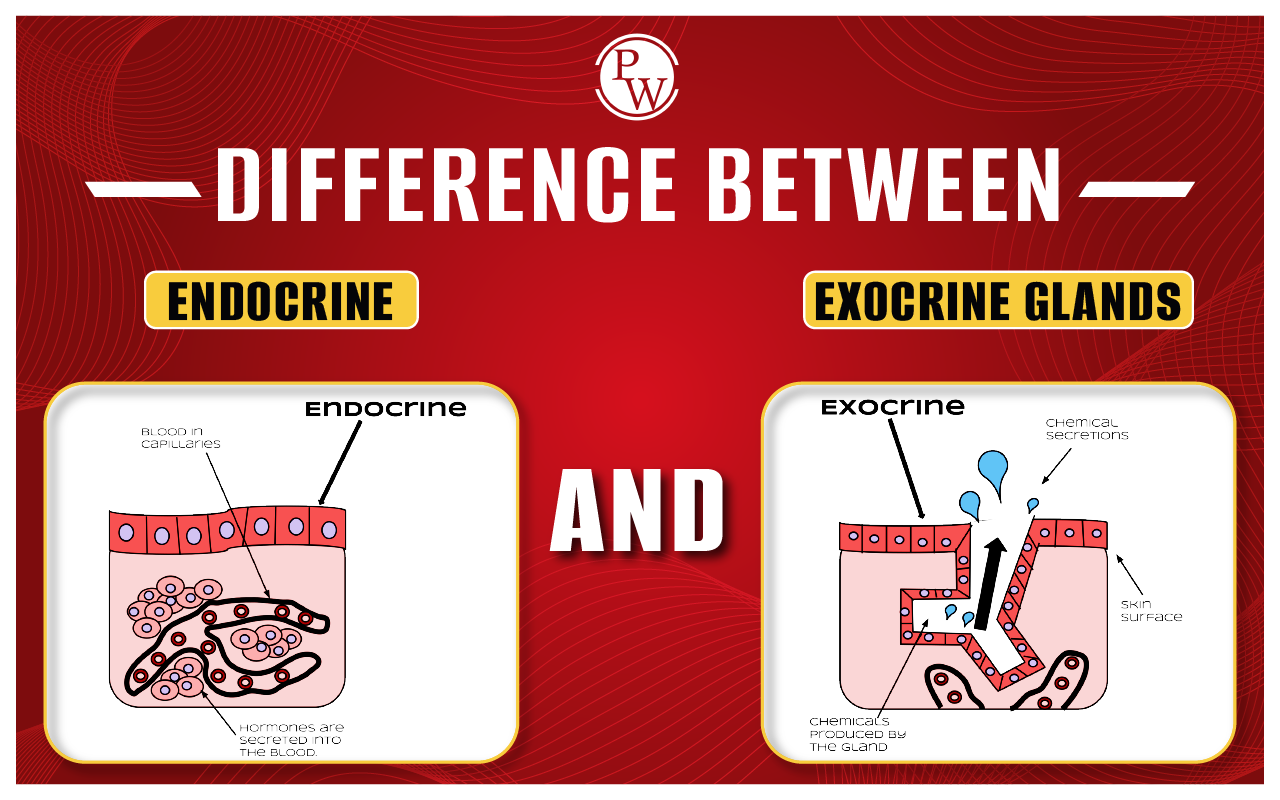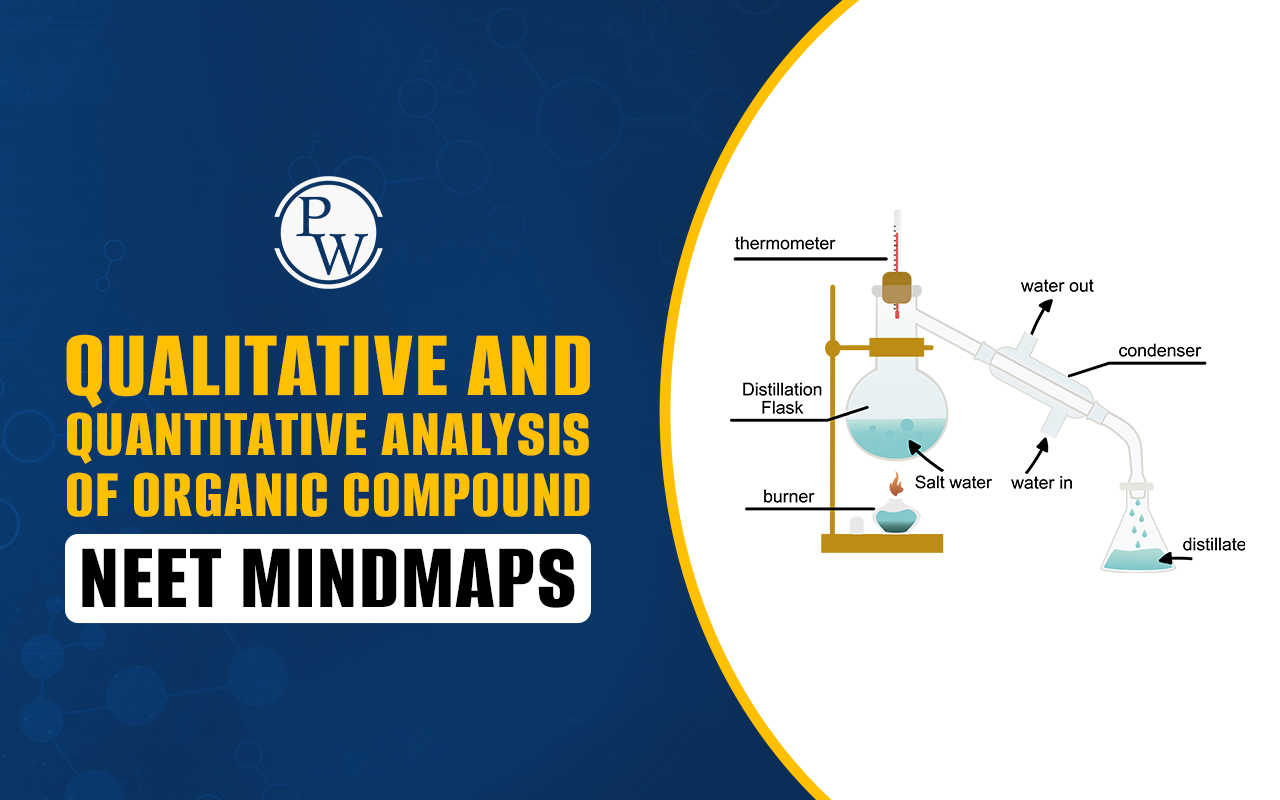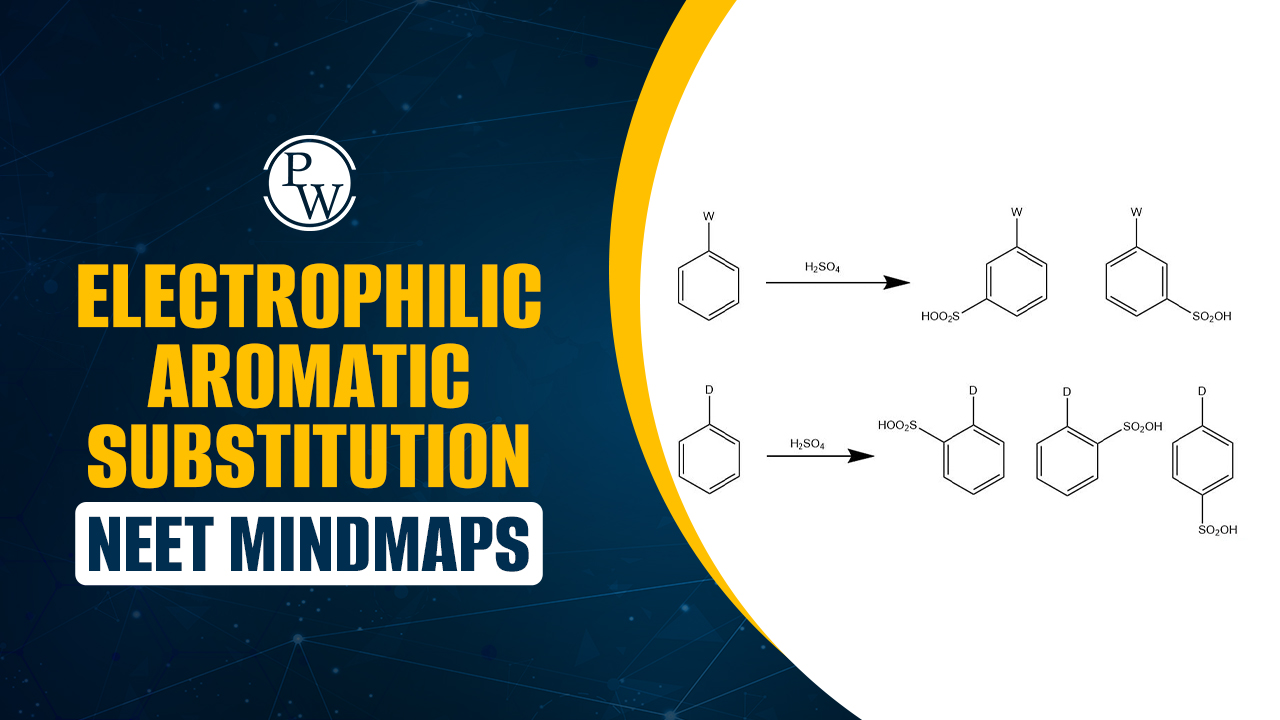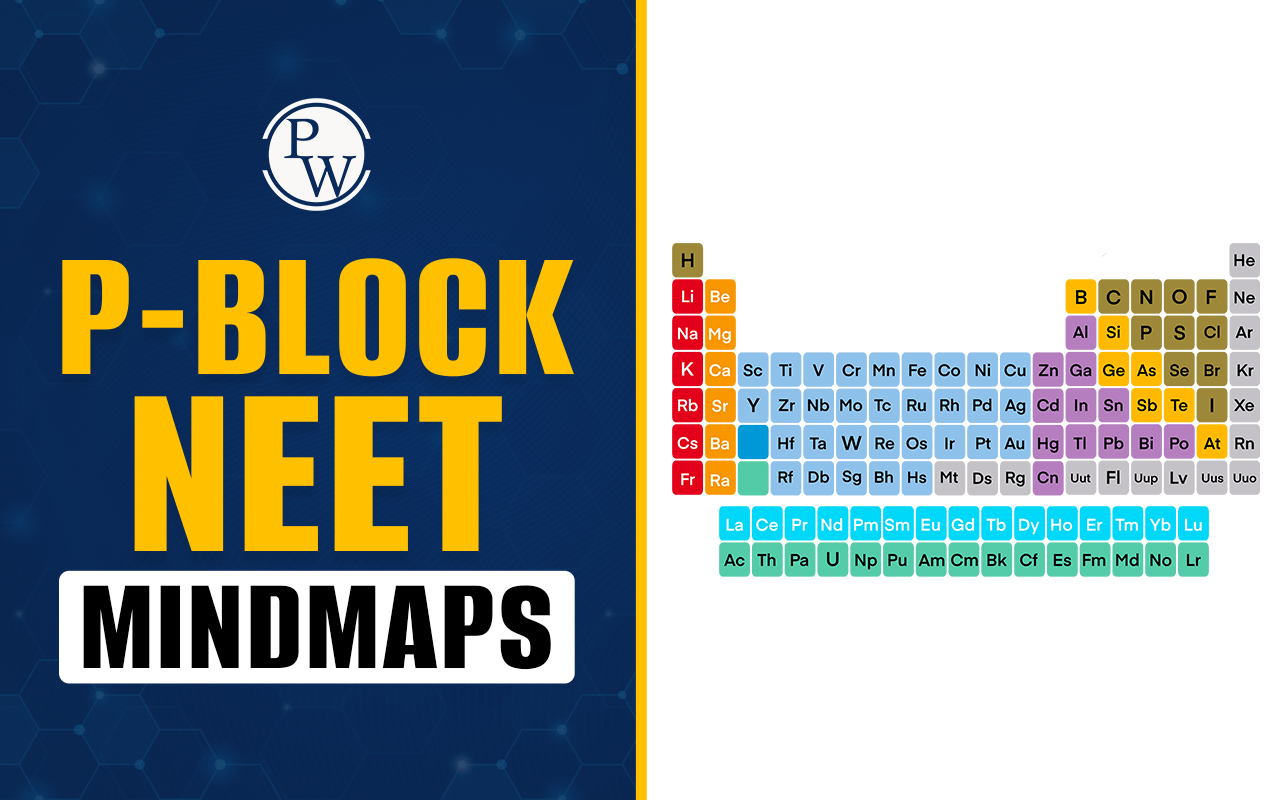

| NEET Biology Syllabus | NEET Biology Diagrams |
| NEET Biology MCQ | NEET Biology Chapter wise Weightage |
| NEET Biology Notes | NEET Previous Year Question papers |
Difference Between Endocrine and Exocrine Glands Overview
In the human body, the endocrine and exocrine glands play distinct roles. Endocrine glands release hormones into the bloodstream. They act like messengers that influence various organs throughout the body. They lack ducts and have a systemic impact. In contrast, exocrine glands release substances through ducts and exert localized effects, either externally or internally.
Difference Between Endocrine and Exocrine Glands
Endocrine and exocrine glands play essential bodily roles. They differ in their secretion mechanisms and targets. Hormones released by endocrine glands impact distant cells and enter the circulation. Exocrine glands discharge products through ducts and act locally. The difference between endocrine and exocrine glands is given in the table below.
| Difference Between Endocrine and Exocrine Glands | ||
|---|---|---|
| Basis | Endocrine Glands | Exocrine Glands |
| Mode of Secretion | It secretes hormones directly into the bloodstream. | It secretes products through ducts onto a body surface or a body cavity. |
| Target Tissues | It affects distant target cells or organs throughout the body. | It acts locally on specific target areas, usually through ducts. |
| Nature of Secretions | Typically, hormones (proteins or steroids). | Various substances, such as enzymes, mucous, and sweat |
| Examples | The pituitary gland, thyroid gland, adrenal glands, pancreas, | Salivary glands, sweat glands, sebaceous glands, and digestive glands |
| Transport Medium | The transport medium of endocrine glands is the bloodstream. | The transport medium of exocrine glands is the Ducts |
What is a Gland?
A gland is a tissue or a cell that absorbs certain substances from the blood. It modifies or concentrates them and then releases or gets rid of them so they may be used again. A gland is made up of columnar or cuboidal epithelium. Endocrine or ductless glands produce hormones such as pituitary, thyroid, and adrenal. They enter the bloodstream directly instead of through ducts. Exocrine glands (salivary, sweating, and stomach) expel their contents through ducts.
Endocrine Glands
The human body's endocrine glands are specialized tissues that directly release hormones into the surrounding tissues or bloodstream. Unlike exocrine glands, endocrine glands lack ducts, and their secretions are essential in regulating various physiological processes. Hormones act as chemical messengers. They signal and coordinate activities in different parts of the body. It influences growth, metabolism, mood, and other essential functions.
Examples of Endocrine Glands
Endocrine glands regulate bodily functions by releasing hormones directly into the bloodstream. The examples of endocrine glands are as follows.
- Pineal Gland : It produces melatonin to regulate sleep and reproductive cycles.
- Ovaries : They release estrogen and progesterone for the development of female characteristics.
- Testes : It releases testosterone, influencing the development of male characteristics during puberty.
Exocrine Glands
Exocrine glands are specialized structures in the human body that release chemical substances into ducts. It facilitates the secretion of these substances onto surfaces inside and outside the body. Unlike the endocrine glands, the exocrine glands have ducts through which their secretions are transported. Examples of exocrine glands include the sweat, sebaceous, and salivary glands. These glands play essential roles in digestion, temperature regulation, and maintaining skin health by producing substances like sweat, oil, and saliva.
Examples of Exocrine Glands
An exocrine gland is a gland that uses ducts to distribute its secretions onto a surface or into a particular area to perform metabolic functions. The following are some instances of exocrine glands.
- Pancreatic Acinar Cell : It releases substances through merocrine secretion via exocytosis.
- Lactating Mammary Gland : It releases substances into the cytoplasm through apocrine secretion.
- Sebaceous Gland : It engages in holocrine secretion, a process involving programmed cell death and releasing substances along with cell debris.
PW offers a variety of NEET online courses for all aspirants. Our NEET online coaching is distinguished by its highly experienced faculty. The program includes regular assessments, mock tests, and question-and-answer sessions. Our teachers are experts in their subjects and understand the NEET exam pattern.
Difference Between Endocrine and Exocrine Glands FAQs
Why is the pituitary gland referred to as the "master" gland?
What is the largest exocrine gland in the human body?
Which gland is the largest endocrine gland?
What distinguishes endocrine from exocrine glands in Class 12 biology?












